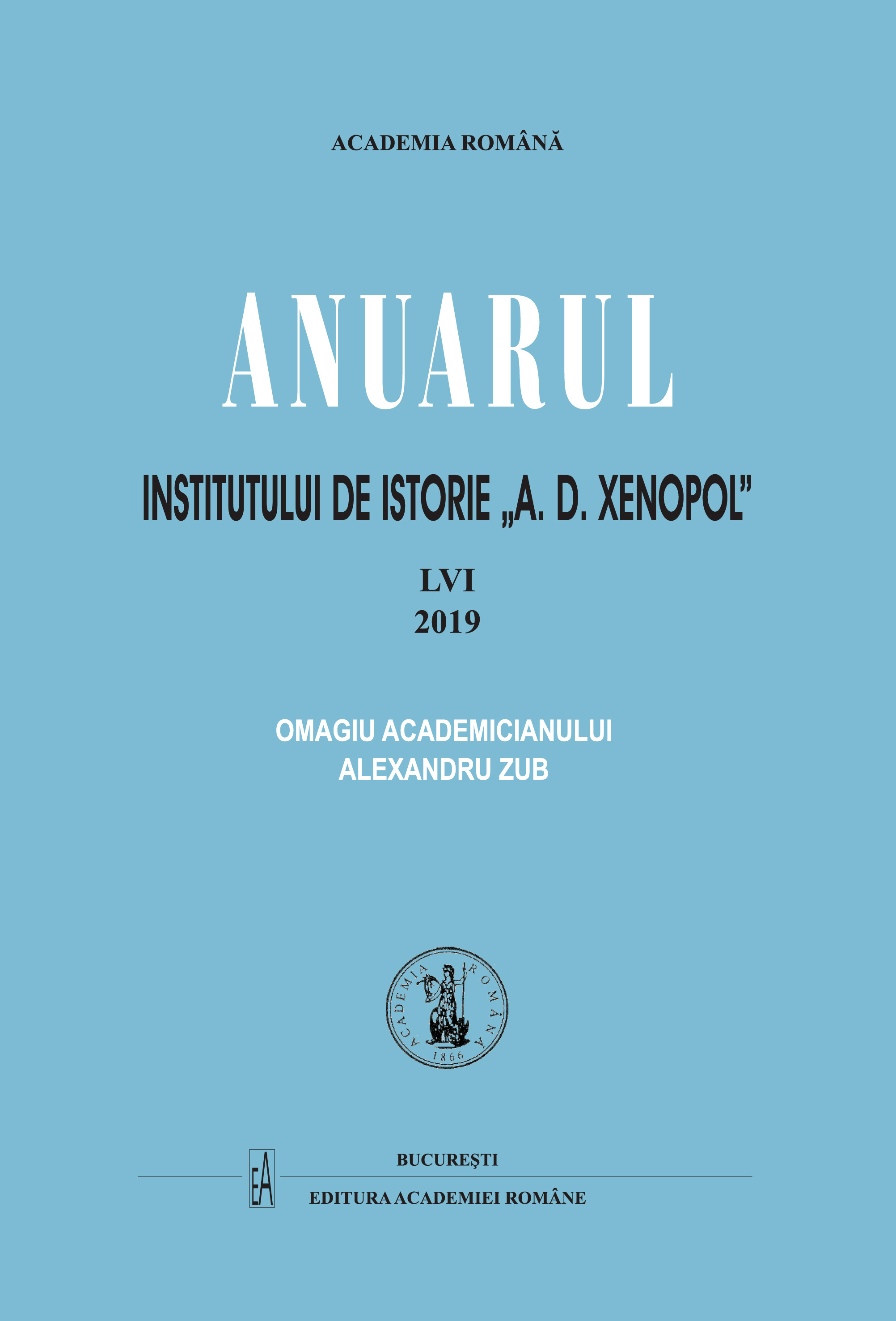REGULAMENTUL ORGANIC AL MOLDOVEI. GENEZĂ, ORIZONT POLITIC, CONȚINUT ȘI SEMNIFICAȚII
THE ORGANIC STATUTE OF MOLDAVIA. GENESIS, POLITICAL HORIZON, CONTENT AND MEANINGS
Author(s): Dumitru VitcuSubject(s): History, History of Law, Constitutional Law, Modern Age, 19th Century
Published by: Editura Academiei Române
Keywords: Adrianople Treaty; Organic Regulation; Moldavia; Wallachia; Modernity; Russian protectorate; Ottoman Empire; National unity;
Summary/Abstract: The Organic Regulation, or Organic Statute of Moldavia, as it is generally wellknown – together with a similar document for Wallachia – during the Russian occupation of the Romanian Principalities (1828−1834), being promulgated, first in Bucharest, in July 1831, and then in Iași, in January 1832. The both documents have formed an object of controversy among historians, who have described them, alternately, as liberal and authoritarian. Far from being a document of Russian essence, as some analysts have asserted, the Organic Statute of Moldavia, like that of Wallachia, represented the first modern law with constitutional character for the extra-Carpathian Romanian society. The Organic Statute provided for a centralized state system and the separation of the executive and legislative powers. The executive branch was to be headed by a prince, who was to be elected for life by a special Assembly of high boyars. The legislature was also composed of members of this class. The Assembly could pass laws, but the prince had a veto right. The prince could also prorogue the Assembly, although he could not dissolve it without the permission of the Ottoman Empire, in its capacity of suzerain power, and the Russian Court, as a protective one. The Assembly voted the budget (a novelty in Romanian political life), but it could not force the prince out of office. It could, however, appeal over the head of the ruler directly to Ottoman and Russian courts. So, the possibility of foreign interference was thus assured all along the line. The new statute offered great benefits to the boyars, who used this opportunity to make gains at expense of the peasants. With the end of the Ottoman right of preemption on Romanian products (by the Adrianople Treaty of 1829), and with the growing demand from the West European states, the landowners saw the opportunity to make greater profits from their estates, being designated for the first time, by law, as the fulfill owners of the land. In terms of consti-tutional theory, some notable firsts: as the introduction of the budgetary principle, majority rule, remuneration of the civil service on a professional basis, promotion by merit, a state educational system, a health service, a national militia, and the finality of legal decisions were impressive for that epoch. The Organic Statute (Regulation) of the both Principalities may be considered significant enough to give its name to a whole period and coincides well enough with Romania’s national rebirth. Taking in account the perfect structure and the similarity of all legal dispositions either for Moldavia or for Wallachia, that historical moment and document mean, also, the first step on the long way of union of those Principalities, and making the Romanian national state. The next steps will be taken in the years 1848, through the customs union, 1859, thanks to political unity, and finally, in 1862, when the administrative union registered on the world map a new modern state, Romania.
Journal: Anuarul Institutului de Istorie »A.D. Xenopol« - Iaşi
- Issue Year: LVI/2019
- Issue No: 56
- Page Range: 87-113
- Page Count: 27
- Language: Romanian

